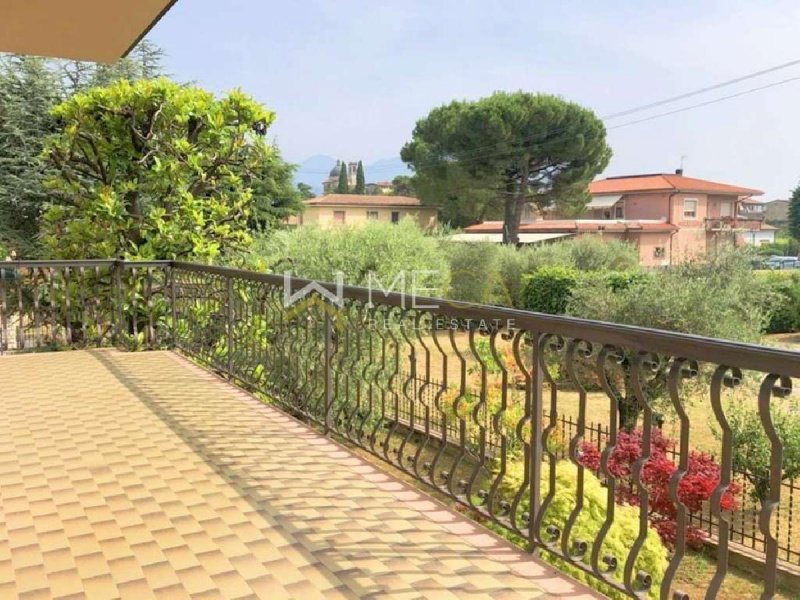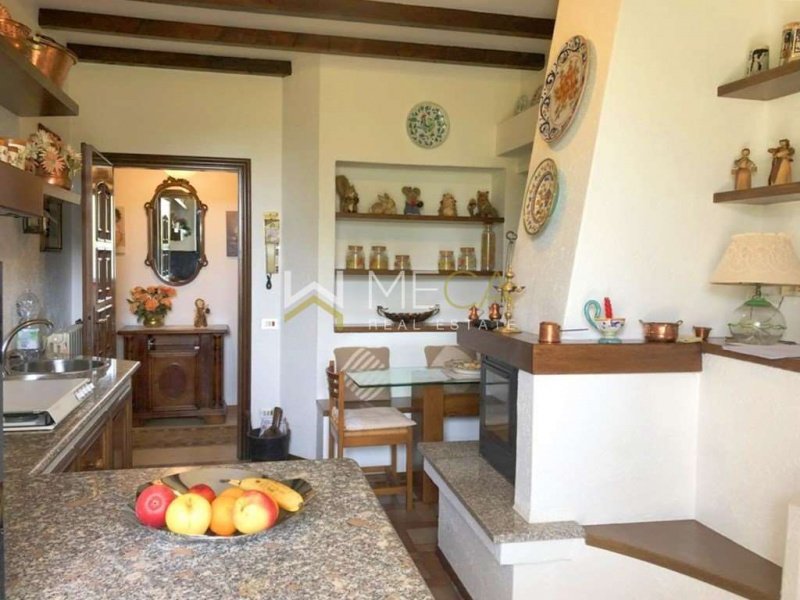590,000 €
5间卧室别墅, 450 m² 加尔达湖畔普埃尼亚戈, Brescia (省) 加尔达湖
加尔达湖
主要特点
描述
Puegnago,拉法村,距离马内尔巴和圣费利塞的海滩仅1.5公里,非常靠近步行即可到达的所有服务,大小重要的庄园别墅,分为两间四室公寓,每间公寓均设有私人入口,周围环绕着一个约1000平方米的可步行的私人花园。
湖是很容易到达的
别墅建于1980年,维护良好,双层玻璃窗安装在2000年代初。
战略位置方便通信,可快速方便地到达Saló和Desenzano镇。
液化石油气系统,散热器,可能连接到街上的燃气网络。
气氛非常安静和私人,这要归功于别墅周围的花园和封闭道路,如果不是居民,不受车辆交通的影响。
四轮车库面积约107平方米,设有许多烧烤区。
普埃尼亚戈苏尔加尔达
该镇位于Valtenesi Morenic山的天然两栖剧院; 它拥有丰富的草坪和树林,阳光明媚,享有湖泊和巴尔多山的景色。 该市由六个村庄组成: 城堡,穆拉,帕卢德,蒙特西多,拉法和圣基里科。 卡斯特罗是中央小村庄,因为它拥有市政厅和教区; 市政图书馆、邮政局和药房。 酒店还设有私人硕士学校和诊所。 随着考古学的发现和索韦尼戈湖附近发现的宫殿的存在,该镇自青铜时代以来一直有人居住。 这个名字似乎来自波皮纽斯人的拉丁语(波皮尼亚克斯和中世纪的普维纳科); 在罗马时代(公元前21世纪) 历史可以追溯到1971年发现的罗马别墅的遗迹,根据10世纪的证据,还有一座献给维多利亚女神的庙宇。 在10世纪,居民建造了一个加固的房子,有一个不规则的六角形计划,以面对北部人口的入侵,特别是匈牙利血统的入侵。 其中一座配有塔楼,被改造成目前的钟楼。
它在十五世纪从维斯康蒂的统治到威尼斯共和国的统治,直到拿破仑和奥地利占领。 然后,他跟随意大利统一后的历史事件。 有趣的建筑是普埃尼亚戈德尔加尔达城堡。 典型的厨房使用额外的初榨橄榄油DOP。 (一种伦巴德油)和DOCC葡萄酒 在这些地方,其中格罗佩洛是标志。 在夏季,一个博览会致力于这些优秀的东西; 传统的葡萄酒是普埃尼亚戈的gnocchi,由面包制成,配有烧烤香肠,配有番茄酱。
能量类: F 249.69 kWh / m2 a
湖是很容易到达的
别墅建于1980年,维护良好,双层玻璃窗安装在2000年代初。
战略位置方便通信,可快速方便地到达Saló和Desenzano镇。
液化石油气系统,散热器,可能连接到街上的燃气网络。
气氛非常安静和私人,这要归功于别墅周围的花园和封闭道路,如果不是居民,不受车辆交通的影响。
四轮车库面积约107平方米,设有许多烧烤区。
普埃尼亚戈苏尔加尔达
该镇位于Valtenesi Morenic山的天然两栖剧院; 它拥有丰富的草坪和树林,阳光明媚,享有湖泊和巴尔多山的景色。 该市由六个村庄组成: 城堡,穆拉,帕卢德,蒙特西多,拉法和圣基里科。 卡斯特罗是中央小村庄,因为它拥有市政厅和教区; 市政图书馆、邮政局和药房。 酒店还设有私人硕士学校和诊所。 随着考古学的发现和索韦尼戈湖附近发现的宫殿的存在,该镇自青铜时代以来一直有人居住。 这个名字似乎来自波皮纽斯人的拉丁语(波皮尼亚克斯和中世纪的普维纳科); 在罗马时代(公元前21世纪) 历史可以追溯到1971年发现的罗马别墅的遗迹,根据10世纪的证据,还有一座献给维多利亚女神的庙宇。 在10世纪,居民建造了一个加固的房子,有一个不规则的六角形计划,以面对北部人口的入侵,特别是匈牙利血统的入侵。 其中一座配有塔楼,被改造成目前的钟楼。
它在十五世纪从维斯康蒂的统治到威尼斯共和国的统治,直到拿破仑和奥地利占领。 然后,他跟随意大利统一后的历史事件。 有趣的建筑是普埃尼亚戈德尔加尔达城堡。 典型的厨房使用额外的初榨橄榄油DOP。 (一种伦巴德油)和DOCC葡萄酒 在这些地方,其中格罗佩洛是标志。 在夏季,一个博览会致力于这些优秀的东西; 传统的葡萄酒是普埃尼亚戈的gnocchi,由面包制成,配有烧烤香肠,配有番茄酱。
能量类: F 249.69 kWh / m2 a
此文本已自动翻译。
细节
- 物业类型
- 别墅
- 状况
- 全面整修/可居住
- 房屋面积
- 450 m²
- 卧室
- 5
- 浴室
- 2
- 花园
- 1,000 m²
- 能效评级
- 249,69
- 参考代码
- MECA0314
距兴趣点的距离:
距离以直线计算
- 机场
22.0 km - Verona VBS - Brescia Montechiari
35.0 km - Verona VRN - Valerio Catullo
65.0 km - Milano BGY - Orio Al Serio
85.0 km - Parma PMF - Giuseppe Verdi
- 高速公路出口
- 13.0 km
- 医院
- 4.0 km - Ospedale di Salò
- 海岸
- 142.3 km
- 滑雪胜地
- 7.2 km
在此物业附近
- 商店
160 m - 超级市场 - Family Market
170 m - 面包店 - La Forneria
710 m - 农家店 - Azienda Agricola Cà Granda
820 m - 糕点店 - Pasticceria dell'Ospite
- 学校
840 m - 学校 - Scuola Primaria
17.0 km - 大学 - Università degli Studi di Milano - Palazzo Feltrinelli
23.8 km - 高等教育机构 - Conservatorio di musica Luca Marenzio
- 药房
- 800 m - 药房
- 兽医
- 2.1 km - 兽医 - Clinica Veterinaria Sant'Antonio
加尔达湖畔普埃尼亚戈:关于城市的信息
- 海拔
- 高出海平面224m
- 面积
- 10.97 km²
- 地理区域
- 内陆丘陵
- 人口
- 3483
您如何看待该广告的质量?
提供有关此广告的反馈,帮助我们改善您的Gate-away体验。
请不要评估物业本身,而只是评估其展示的质量。


